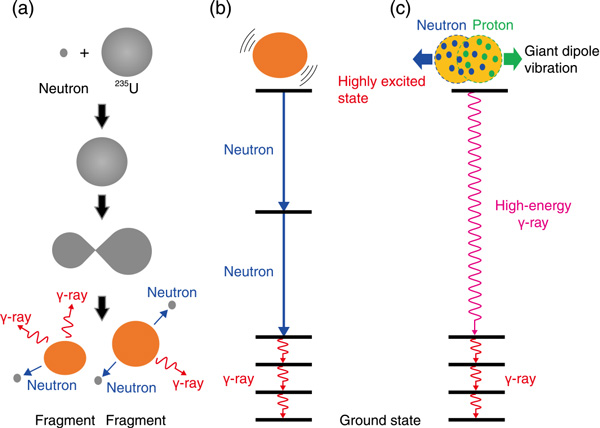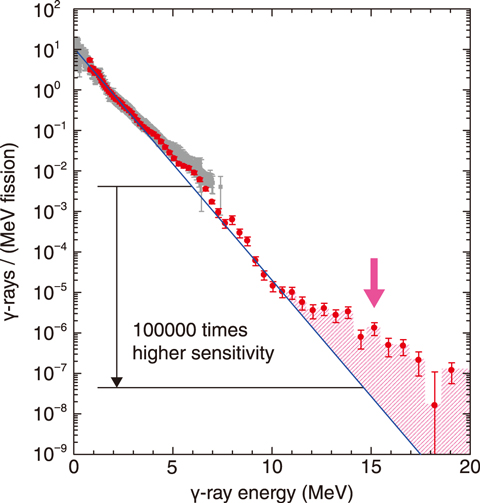
Fig.3-2 Formation (a) and deexcitation (b) (c) processes of a fission fragment

Fig.3-3 γ-ray energy spectrum
Neutron-induced fission of uranium-235 (235U) produces energy for nuclear power generation. During nuclear fission, two fission fragments are produced, and neutrons and γ-rays are emitted from the fragments. Neutrons are used to sustain a chain reaction by inducing further fission, and γ-rays are absorbed by the surrounding materials and contribute about 3% of the heat released in a nuclear reactor. Therefore, data on the multiplicity and the energy spectrum of the emitted neutrons and γ-rays can help to improve the safety of the nuclear reactor.
The emission of neutrons and γ-rays from the fission fragments is summarized in Fig.3-2. At the instance of fission, the fission fragments are highly excited. In general, neutrons are dominantly emitted and release a large amount of excitation energy; once neutron emission is no longer energetically possible, γ-ray emission occurs (i.e., Fig.3-2(b)). In this simple picture, the maximum energy of γ-rays does not exceed the energy required for neutron emission (about 7 MeV). In fact, measured γ-ray spectra are limited below the γ-ray energy of 7 MeV for neutron-induced fission of 235U. By contrast, this work aimed to extend the known γ-ray spectrum to higher energies. To do so, we developed a new detection system with a sensitivity 100000 times higher than that of previous studies. As a result, γ-rays with energies of up to 20 MeV were successfully measured, as shown in Fig.3-3. The observed γ-ray yield in the region above 12 MeV is higher than that in the spectrum expected from the general deexcitation process. This indicates the presence of a mechanism in which a large amount of excitation energy is released by γ-rays without emission of neutrons.
These results were then further analyzed using a theoretical model; high-energy γ-ray emission was found to be caused by the giant dipole vibration. In this vibration process, well-known to appear in the high-energy γ-ray absorption process, the protons in the nucleus move in one direction while the neutrons move in the opposite direction. Here, the vibration appeared at the instance of fission, i.e., when the nucleus divided into two. The unique appearance of this vibrational behavior was thus captured by observing high-energy γ-rays emitted during fission. These measurements of high-energy γ-rays are expected to help further the understanding of the fission mechanism, since the origin of such high-energy γ-rays reflects how fission fragments are produced in the fission process.
This study was conducted on “Measurement of high-energy prompt gamma-rays in fission for surveillance detector to monitor criticality of fuel debris”, supported by the Ministry of Education, Culture, Sports, Science and Technology (MEXT), Japan.
(Hiroyuki Makii)